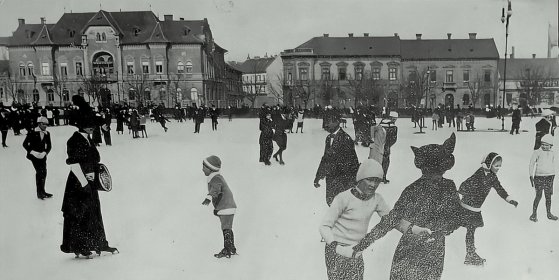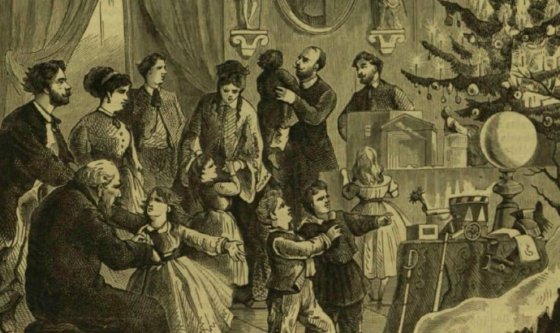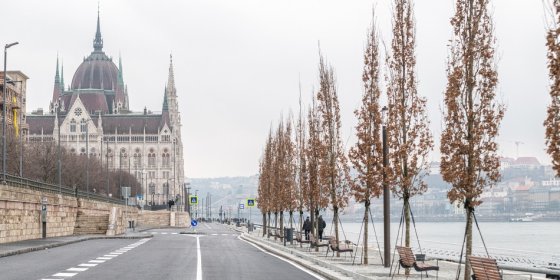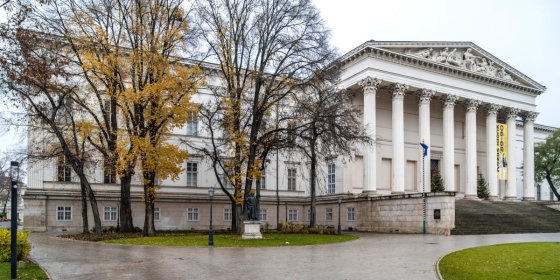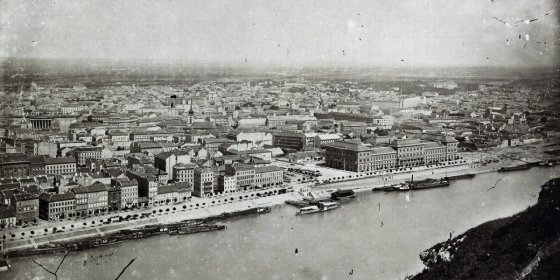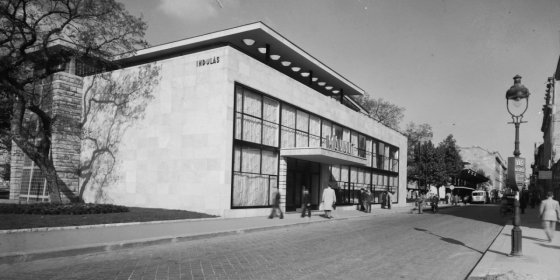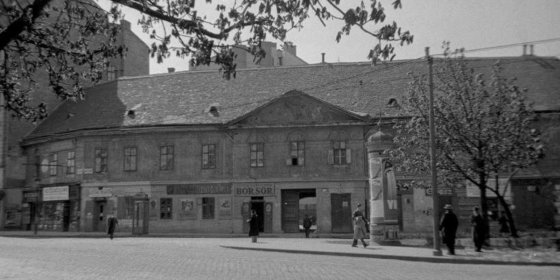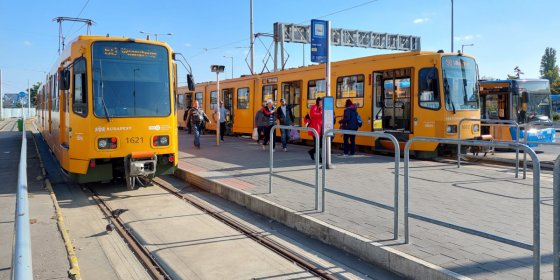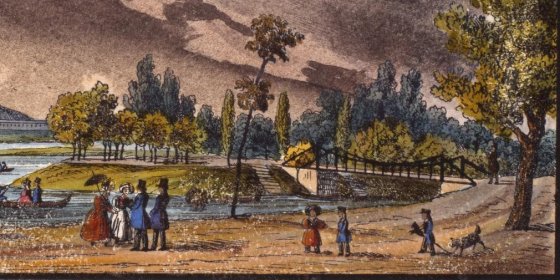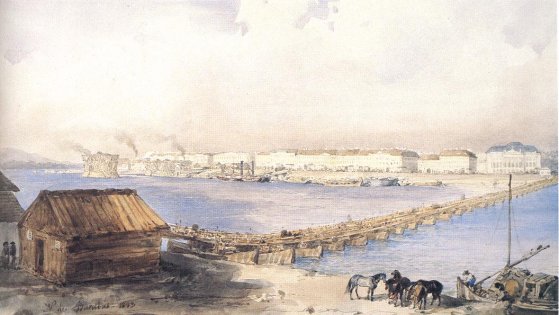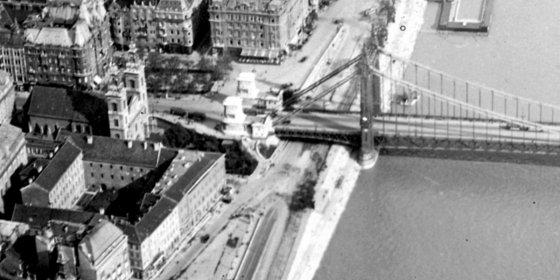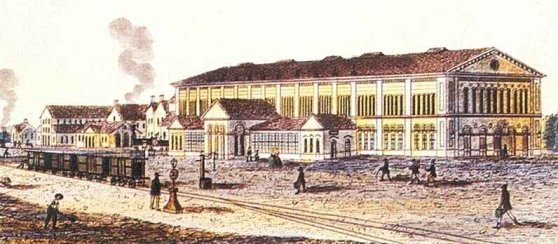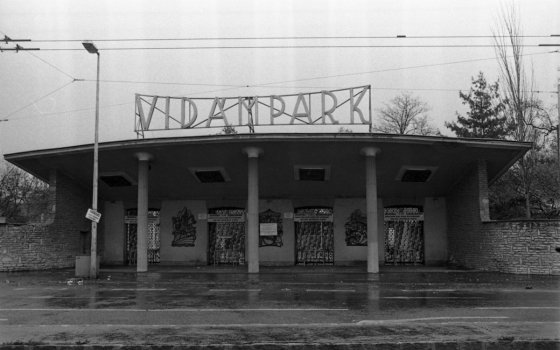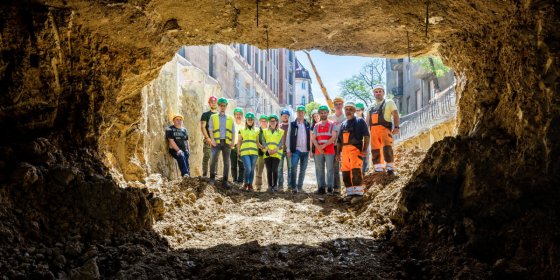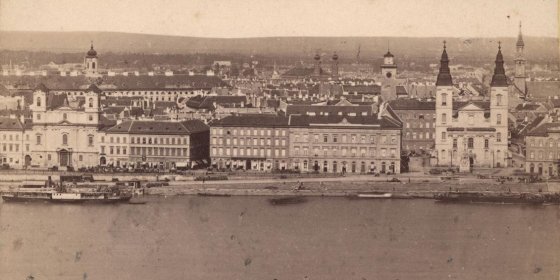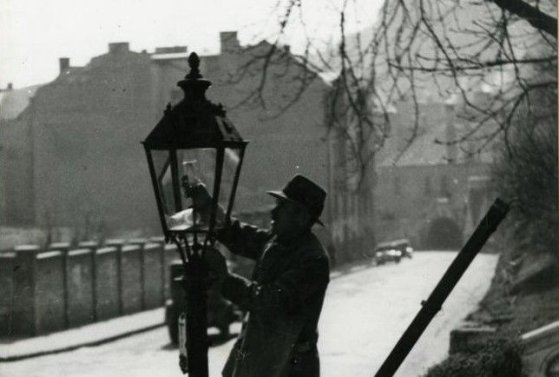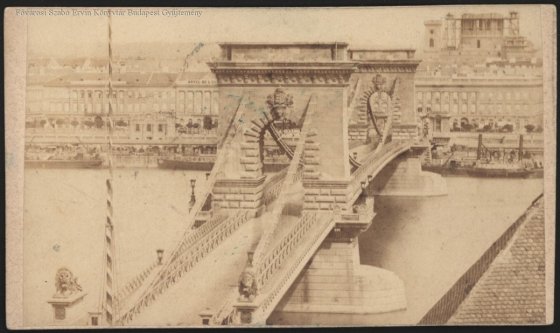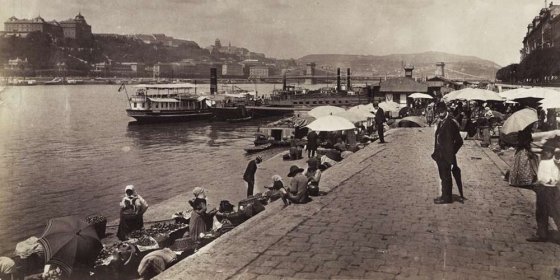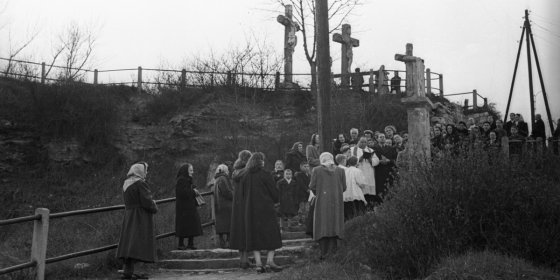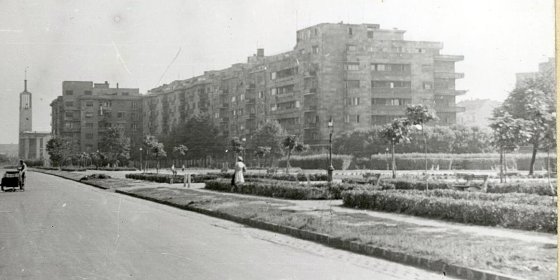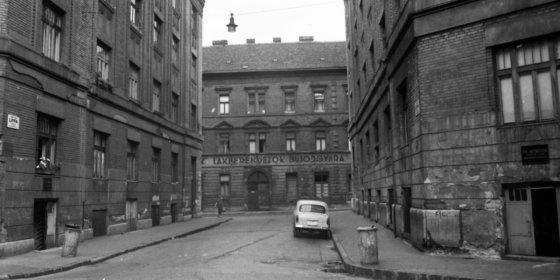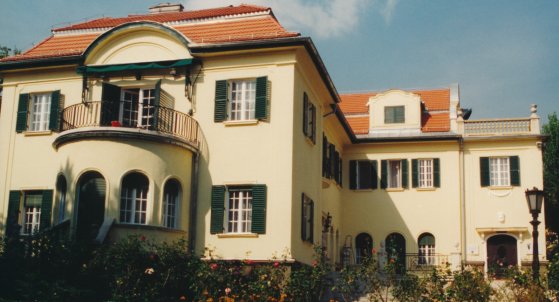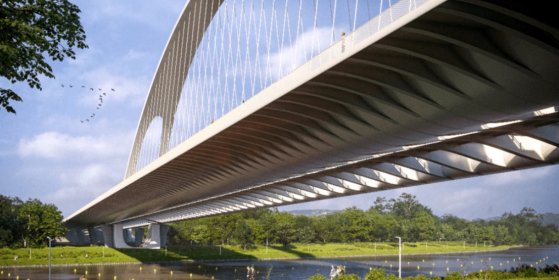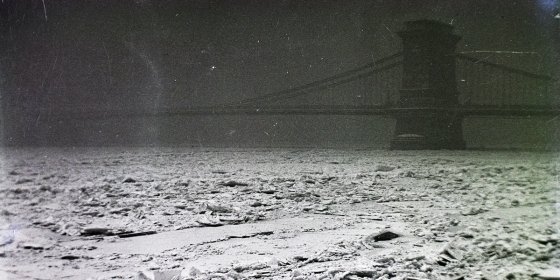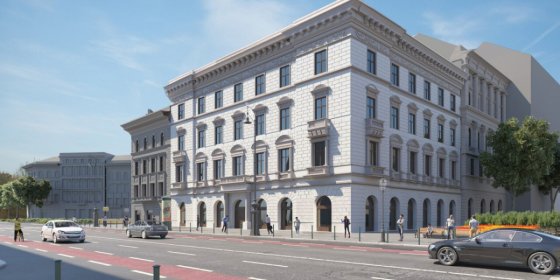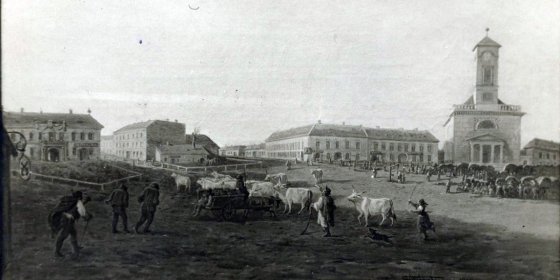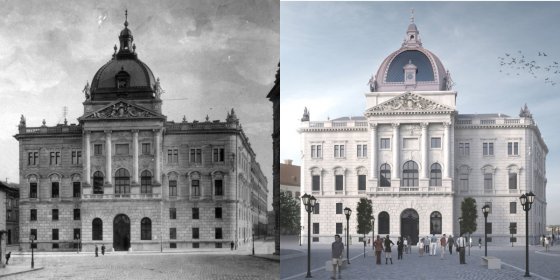 The „intertwined history” of the bridges and the city of Budapest
Which ideas and events have shaped the fate of bridges of Budapest and the cityscape? Alongside many other interesting facts, this question is also answered this newly published book by the Budapest City Archives, which introduces the history of bridges in Budapest.
The „intertwined history” of the bridges and the city of Budapest
Which ideas and events have shaped the fate of bridges of Budapest and the cityscape? Alongside many other interesting facts, this question is also answered this newly published book by the Budapest City Archives, which introduces the history of bridges in Budapest.
Pest
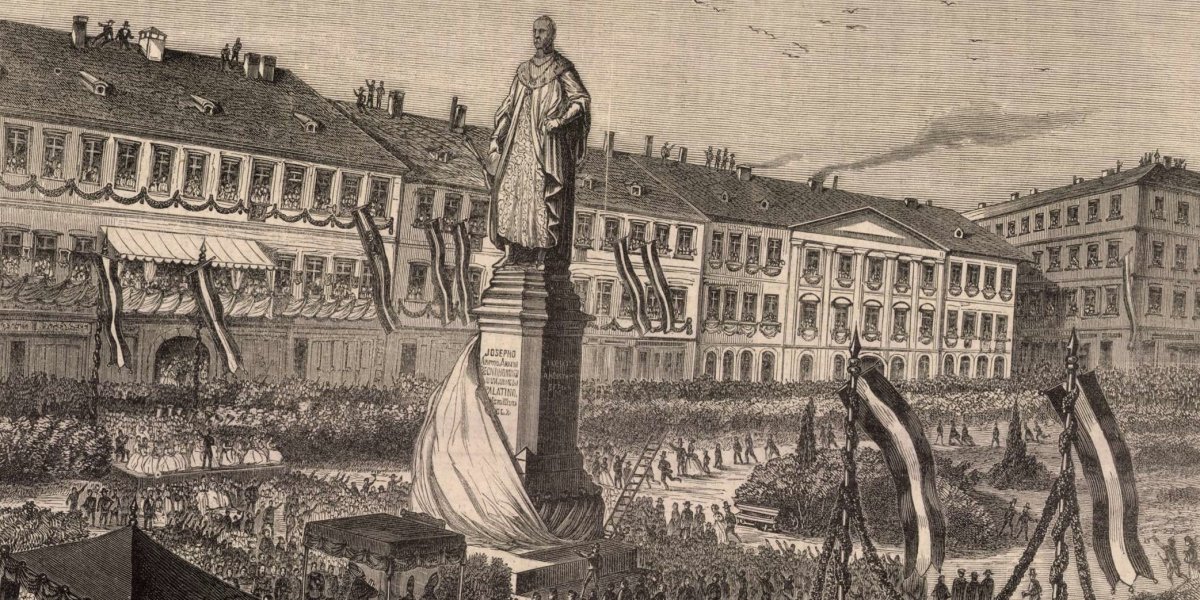 Palatine Joseph, who died 175 years ago, had been systematically developing Budapest for decades before the Public Works Council
Palatine Joseph, who died 175 years ago, had been systematically developing Budapest for decades before the Public Works Council
January 15, 2022 at 3:30 PM
Palatine Joseph [József nádor in Hungarian] died 175 years ago in Buda. Although the archduke born in Florence was destined for a different career, he did much for Hungary, Pest and Buda from 1795 as a governor, then from 1796 as Palatine until his death in 1847. On the anniversary of his death, we put together a bouquet of what Budapest owes to him.
It was once a famous ice rink in Buda, today it is one of the busiest junctions in the country
December 29, 2021 at 11:00 AM
Ice skating is one of the most popular winter sports done by many in Budapest. Few people know, but one of the busiest junctions in the country, Széll Kálmán Square, was once home to a famous and very popular ice rink in Buda with a huge, richly decorated skating hall. By the end of the 1930s, the square had been completely transformed and today we only have pictures and stories of the former famous skating rink and sports fields in Buda.
The first Christmas tree - The custom of decorating pine trees is almost two hundred years old in Budapest
December 24, 2021 at 9:00 AM
It is certain that the Christmas tree appeared in Pest-Buda in the first decades of the 19th century, but it has not yet been possible to find out exactly who decorated the first tree. According to most sources, Countess Teréz Brunszvik played a major role in spreading the custom: on 24 December 1828, the children could have surrounded the Christmas tree in the kindergarten she had founded in Buda, in today's Mikó Street, but it is possible that decorated pine trees appeared earlier in the homes of aristocratic families.
The pedestrian promenade on the lower embankment of Pest has been completed
December 13, 2021 at 2:30 PM
Reconstruction work has been completed, so the pedestrian promenade of the sr. József Antall embankment on the section between the Parliament and Margaret Bridge is open. The three-phase modernization of the banks of the Danube in Pest was started by the local council of Budapest in 2017 in order to improve the livability of the embankments.
The interiors of the Hungarian National Museum are being renovated
November 14, 2021 at 4:00 PM
Internal renovation work has begun at the Hungarian National Museum, during which the reception areas and the museum shop, as well as a café, will be renovated.
"Budapest should be made a metropolis" - 150 years ago, the large-scale constructions in the capital were announced
November 4, 2021 at 10:30 AM
The transformation of the Hungarian capital into a metropolis was formulated before the unification of Pest and Buda, when in 1871 a tender was issued for the preparation of a regulatory plan that would provide a framework for the planned large-scale constructions. The tender, which closed 150 years ago, received a number of proposals that contributed to the development of the currently known structure and cityscape of the capital.
The Erzsébet Square bus terminus in the middle of the city centre had been closed for 20 years
October 19, 2021 at 10:30 AM
The Erzsébet Square bus station has not departed and accepted buses for twenty years now. For much of the 20th century, it was still natural for buses to depart from central spaces that were easily accessible to all, but due to changes in urban development considerations, bus stations were pretty slowly pushed out of the inner city core. The Erzsébet Square bus station in the 5th District was also closed down.
The House of Creation was demolished 85 years ago
October 3, 2021 at 10:00 AM
One of the famous buildings in Buda was the House of Creation (Teremtés-ház), which later, as House of Formation (Alkotás-ház), gave the name of the street. On the facade of the house was a relief called Creation, which was considered one of the most beautiful works in all of Buda. The work probably owes its existence to Haydn's oratorio, The Creation, presented in 1800 at the Buda Castle. The building was demolished 85 years ago and replaced by a six-story house. On the occasion of the anniversary, Pestubda presents the history of the former famous building.
Trams from Hanover have been operating in Budapest for 20 years
October 2, 2021 at 4:00 PM
After a long time in the rich tram park of Budapest, the first vehicles manufactured in Western Europe were the trams from Hanover with their characteristic opening staircases, which were put into traffic for the first time on 3 October 2001.
They wanted to call the first suspension bridge in Pest the István Bridge, eventually it was called Dróthíd (Wire Bridge)
August 9, 2021 at 3:00 PM
Wire bridge. It’s a strange name, though that’s how the little bridge, which was handed over 195 years ago, on 9 August1826, in the Városliget, near today’s George Washington statue, was called. The small footbridge was a new technology at the time, as it was a cable bridge and the first suspension bridge in Pest.
The Buda Castle under constructionwas also visited by Maria Theresa, who visited the capital in 1751
August 4, 2021 at 3:00 PM
Although she gave permission to expand the Buda Castle, Maria Theresa visited Pest and Buda only twice. Her first visit took place in August of 1751, the 11th year of his reign, 270 years ago. This was when the diet was held in Bratislava and during that time the royal court spent a few days in Pest and Buda.
Life before the Chain Bridge
August 2, 2021 at 9:00 AM
The pontoon bridge between Pest and Buda was built due to the visit of Archduke Albert Casimir and was closed, with a little exaggeration, due to the trip of Count István Széchenyi. The pontoon bridge between the two banks of the Danube was built 255 years ago and was demolished 171 years ago.
The first horse-drawn railway of Pest started 155 years ago
August 1, 2021 at 9:30 AM
On 1 August 1866, the regular services of the city horse-drawn railway started in Pest. The first route led from today's Kálvin Square to Újpest, the journey time was 35 minutes. The new means of transport advocated by Count Sándor Károlyi was successful, and the horse-drawn railway contributed significantly to the development of Újpest. A few years after the handover of the first track, Pest and Buda were almost enmeshed by horse-drawn railway tracks.
When the ramp of the Elizabeth Bridge was widened, moving the church also came up, in the end the sidewalk was lowered
July 17, 2021 at 9:00 AM
In the 1930s, the car traffic in Budapest was already so high that the Pest bridgehead of the Elizabeth Bridge had to be rebuilt in order to avoid permanent traffic jams and the risk of accidents. Even the relocation and even demolition of the Inner City Parish Church was discussed, but instead the designers chose an imaginative and inexpensive technical solution. The new ramp of the bridge was completed on 17 July 1936.
A train pulled out of Budapest's first railway station 175 years ago
July 15, 2021 at 9:00 AM
The first station building ('indóház') in Pest was handed over on 15 July 1846, from where the first Hungarian steam-powered train to Vác, which was the first section of the railway line to Vienna, left. With rail transport, the central role of Pest has been strengthened within the country and it set a significant development in motion. So much so that by the 1870s, rail traffic had outgrown Pest's first railway station.
Once upon a time there was the Amusement Park - In the early 1800s, the former 'Vurstli' settled in the Városliget
July 4, 2021 at 9:30 AM
The history of the former Amusement Park of Budapest dates back a long time: performers in Városliget entertained the population of the capital since the beginning of the 19th century. The Vurstli, the Ős-Budavár, the Angol Park, and from 1950 the Amusement Park of Budapest were all created to entertain people. The Amusement Park, which has had several golden ages, was finally closed in 2013, and in its place the Holnemvolt Vár can now be seen and the Pannon Park is being built, which will perhaps restore the atmosphere of the former entertainment district.
A decades-old plan comes to life – A tunnel connecting Széll Kálmán Square with Városmajor
June 25, 2021 at 9:00 AM
The construction of the new pedestrian crossing connecting Széll Kálmán Square with the Postapalota (Postal Palace) and Városmajor started last autumn, the two ends of which met under Várfok Street almost a month ago. The tunnel, which is expected to be completed by the end of the year, will not only provide an unobstructed passage for pedestrians and cyclists in the area to Városmajor but will also create a new entrance to the former Postapalota, also known as the Buda Palace.
160 years ago, the city of Pest declared war on dirt roads
June 11, 2021 at 9:00 AM
Today, Budapest's road network typically consists of paved roads. Although there are still dirt roads, their number is constantly decreasing. In Budapest, the paving of streets started relatively late, but 160 years ago, the city of Pest adopted a decree on what paved roads should look like.
The first gas lamp in Pest was lit 205 years ago
June 3, 2021 at 9:00 AM
The aldermen of Pest were given plenty to think about when providing night lighting on the city streets in the 18th century, so in 1715, they forbade staying on the street without a candle or lantern after sunset. Lantern-bearers appeared, carrying candles and oil lamps in front of pedestrians. Oil lamps began to be put out in public spaces at the end of the century, but they only gave little light. The solution was the gas lamp, the first of which was set up in Pest by a scientist, experimenting physician, Lajos Tehel, on 5 June 1816. The lamp was lit up on the facade of the university building on today’s Egyetem Square. Now it is part of the National Museum’s collection.
Neither Pest nor Buda wanted a private company to build the first bridge in Budapest – the bridge law is 185 years old
May 4, 2021 at 9:00 AM
A law promulgated 185 years ago made it possible to build the first permanent Danube bridge connecting Buda and Pest. A long debate preceded the adoption of the bridge law because neither Pest nor Buda supported a private company building the bridge, as they did not want to waive their customs rights.
The longest monuments in Budapest: the history of the embankments
April 12, 2021 at 9:30 AM
Until the middle of the 19th century, anyone could walk down to the undeveloped, muddy banks of the Danube, but during a flood, nothing stood in the way of the water. The 12-kilometre-long embankments along Budapest's Danube Banks have become an essential part of the cityscape and protect the capital from floods. In connection with the freshly announced reconstruction of the Pest embankment, Pestbuda presents the history of these magnificent structures.
One of the oldest ways of the cross in Budapest – The Kiscell Calvary is over 200 years old
April 3, 2021 at 11:00 AM
During the Easter period, people used to visit many calvaries, i.e. Ways of The Cross, in Buda and Pest. One of the oldest calvaries in the city, built 200 years ago and starting next to the Kiscelli Museum, is still one of the most visited Ways of The Cross in Budapest today. Even in 1956, the year of the revolution plenty of people walked the Way, as can be seen in a photo from 65 years ago.
Szent István Park turns 85 – A parquet factory once sprawled across the greens
April 1, 2021 at 9:00 AM
The green that opened on 1 April 1936 was originally called Lipótváros Park, then Rakovszky Park. It was given its current name in 1937 and has been called Szent István Park ever since. The site of the beautiful ornamental garden was once a parquet factory, and its construction was initiated in the 1920s by the President of the Public Works Council at the time, Iván Rakovszky. Újlipótváros' most popular park is 85 years old.
Fifty years ago, humans weren’t the most numerous inhabitants of Budapest
February 26, 2021 at 9:00 AM
Rats are one of the most unpopular animals. However, they are also dangerous as they spread countless diseases. In the past, every big city was teeming with these rodents, and even today, only a few can say they are almost rat-free. Budapest is one of them.
An unexpected safe haven – Actress Gizi Bajor sheltered the hunted during the terrors of World War II
February 12, 2021 at 7:00 PM
The outstanding Hungarian actress, Kossuth prize-winner Gizi Bajor died seventy years ago. Her name is known by everyone that is even slightly interested in Hungarian theatre. What is less known is that her villa was a safe haven in 1944 and 1945, where she sheltered, among others, Jews and famous writers in hiding. Since her death, the villa on Stromfeld Aurél Road in the 12th District has preserved her memory as the Gizi Bajor Museum.
A forgotten bridge on the Danube – Many forget the second road bridge under construction in Budapest
January 19, 2021 at 9:00 AM
Two bridges are being built as part of the Galvani Bridge development project. The cable-stayed structure spanning the main Danube branch has been discussed in detail but the other bridge planned to cross the Soroksár branch of the river has almost been forgotten, despite being a major and beautiful piece of infrastructure.
A funeral gave life to the bridge that created Budapest
January 7, 2021 at 9:00 AM
Two hundred years ago, a younger Hungarian hussar officer made a rather reckless statement to a friend. His words had many consequences and changed the lives of many forever. The officer, in fact, was only in a hurry to reach his father's funeral.
Rebirth: Historic palace at 47 Andrássy Avenue restored
January 6, 2021 at 9:00 AM
The building has housed one of the most beautiful cafes in Budapest, a casino, a pharmacy, a glove shop and a car dealership. Until recently, the building that once housed Café Palermo was a black sheep on Andrássy Avenue, but the era of real-estate related corruption and degradation has come to an end. Standing on the corner of Liszt Ferenc Square and Andrássy Avenue, the building currently hidden by a safety net, which hides the luxury apartments being built as part of the restoration.
Leopold Rottenbiller – Three-term Lord Mayor of Pest
January 3, 2021 at 3:00 PM
Leopold Rottenbiller is one of the most unjustly forgotten politicians of Budapest's history, even though a major road bears the name of the urban leader to this day. He served as the Lord Mayor of Pest for three terms, and not in periods of growth, construction and peace. Despite this, Rottenbiller kept the city working. His second term began 160 years ago.
Rebuilt Headquarters of Hungarian Defense Forces will act as gate to the Palace of Buda Castle
December 22, 2020 at 9:00 AM
One hundred and twenty years ago its massive dome was the pride of Dísz Square. However, for the last 70 years, the military headquarters' partially deconstructed remains have lacked form and function. However, this is set to change. After a partial renovation between 2012 and 2014, its continued reconstruction will begin next year, restoring the building to its former glory, and serving visitors to Buda's Castle District.
More articles
 The „intertwined history” of the bridges and the city of Budapest
Which ideas and events have shaped the fate of bridges of Budapest and the cityscape? Alongside many other interesting facts, this question is also answered this newly published book by the Budapest City Archives, which introduces the history of bridges in Budapest.
The „intertwined history” of the bridges and the city of Budapest
Which ideas and events have shaped the fate of bridges of Budapest and the cityscape? Alongside many other interesting facts, this question is also answered this newly published book by the Budapest City Archives, which introduces the history of bridges in Budapest.
 The Bridge Report, which brought a turning point in the history of Budapest
A travel report that changed the history of Pest and Buda, as well as Hungary. The little book contributed to the change of half a thousand years of legal customs and the implementation of an investment of unprecedented size and technical quality. This book was The Bridge Report [Hídjelentés in Hungarian].
The Bridge Report, which brought a turning point in the history of Budapest
A travel report that changed the history of Pest and Buda, as well as Hungary. The little book contributed to the change of half a thousand years of legal customs and the implementation of an investment of unprecedented size and technical quality. This book was The Bridge Report [Hídjelentés in Hungarian].
 Drama on the university wall - The heroic monument was planned 95 years ago
In the constant hustle and bustle of the Egyetem Square in Pest, the students may not even notice the monument that decorates the short section of wall between the church and the central building of ELTE. However, it commemorates their predecessors, the heroes who fought for their country in World War I, and those who heroically helped them. The first design of the dramatically collapsing soldier was born in 1928, ninety-five years ago.
Drama on the university wall - The heroic monument was planned 95 years ago
In the constant hustle and bustle of the Egyetem Square in Pest, the students may not even notice the monument that decorates the short section of wall between the church and the central building of ELTE. However, it commemorates their predecessors, the heroes who fought for their country in World War I, and those who heroically helped them. The first design of the dramatically collapsing soldier was born in 1928, ninety-five years ago.

